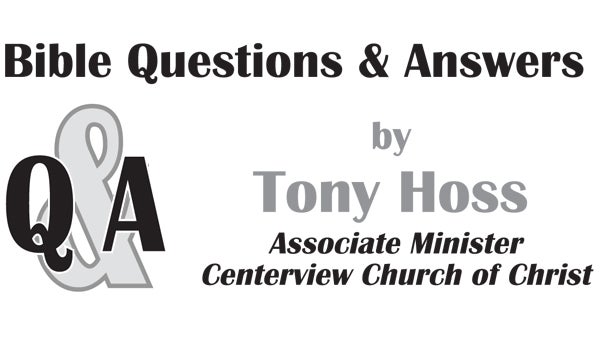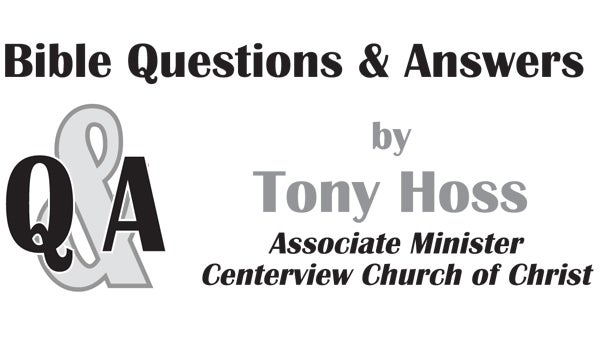Earthquakes, diseases and war….could it mean that the end is near?
Published 8:20 am Friday, February 14, 2020
BY TONY HOSS
It seems as if every time a major calamity occurs somewhere on Earth, Matthew 24 is quoted. If the news reports a major earthquake or tsunami, if they announce a genocide or a war. If the news reports any catastrophe that takes lives, then many religious people immediately refer to Matthew 24:6-7 and warn of the end of time and the second coming of Jesus and then of the 1000-year reign of Christ. Are these claims valid? Is this what Jesus was referring to when He said, “And ye shall hear of wars and rumours of wars … for all these things must come to pass, but the end is not yet. … For nation shall rise against nation, and kingdom against kingdom: and there shall be famines, and pestilences, and earthquakes, in divers places.” (Mat 24:6-7).
As we open and study Matthew 24, it is easy to see that in His warnings in the previous verses, Jesus was not giving mankind a clue concerning His return to this world and the destruction of the world as we know it now. But rather the warning concerned the destruction of Jerusalem and the temple.
We learn in verses 1-2, Jesus and his disciples are leaving the temple and they comment to Jesus about the beautiful buildings in the city. In His response Jesus prophesied that the temple itself would be destroyed. With concern His disciples immediately ask Jesus two questions. According to verse 3, they first want to know, when would the temple be destroyed? Then they wanted to know what would be the sign of Christ’s coming and the end of the world.
In the remainder of chapter 24 and all of chapter 25 we have recorded of us Jesus’ answers to their questions. Jesus begins to explain in verse 4 and continues through verse 13. Logically Jesus answers their first question then the second. He begins by answering their question about when the temple would be destroyed. In his answer Jesus gives them signs that would signify that the terrible event is close; signs such as false prophets, persecution, and apostasy also wars, famines, pestilences and earthquakes. Jesus’s warnings of wars and rumors of wars, nation rising against nation, and famines, pestilences, and earthquakes are often cited as proof that the world is about to end. But in context it has reference to the day and time when Jerusalem and the temple were about to destroyed. The destruction of Jerusalem and the temple took place around 70 A.D., and this occurred according to the prophecies of Daniel. It was at this time that the Roman empire would siege and eventually overrun and destroy the temple just as Jesus had stated.
In verse 13, Jesus encourages them that those who remained faithful throughout all this would be saved. In verse 14, Jesus told them that the gospel would be preached everywhere before the temple was destroyed. We learn from Paul that this prophecy was fulfilled just a few years prior to the destruction of the temple (Colossians 1:23). Next in verses 14-22, Jesus warns, when you see “the abomination of desolation” which was prophesied by Daniel (Daniel 9:27), a prophesy about Rome besieging Jerusalem, to leave immediately without stopping to pack. Some were told to flee to the mountains for safety. It is interesting that in verse 23 Jesus warned them to not listen to anyone saying that He had returned secretly in those days. In verse 27 Jesus shows that His second coming would indeed be visible to all.
In verses 29-30, Jesus describes what some believe to be the end of the world, however this is figurative language like the prophets of old used to describe God’s punishment of wicked nations by allowing their enemies to conquer them (see Isaiah 13:10ff; 34:4ff; Ezekiel 30:18ff; 32:7ff). His next statement that all of what He had just said would take place in that current generation shows very clearly that He had Rome’s destruction of the temple in 70 A.D. in mind (vs. 32-34).
In verses 32-35 Jesus shows that what he had discussed thus far applied only to those in that current generation. He said, “Now learn a parable of the fig tree; When his branch is yet tender, and putteth forth leaves, ye know that summer is nigh: So likewise ye, when ye shall see all these things, know that it is near, even at the doors. Verily I say unto you, this generation shall not pass, till all these things be fulfilled.”
Next week we will discuss the remainder of this great chapter and make application to who it applies.
(Tony Hoss is minister at Centerview Church of Christ, Elizabethton)




